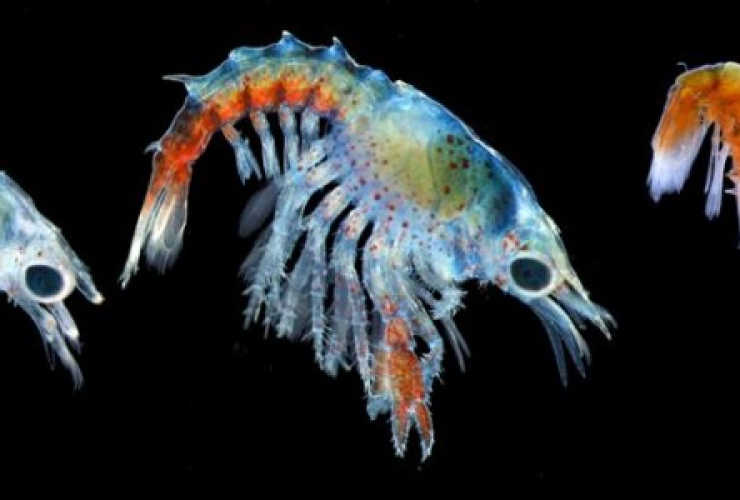Many of us are deluged daily with the dire state of our carbon-saturated atmosphere and while many may be suffering from ‘climate apocalypse fatigue’ there is an undeniable tsunami wave of citizen action building worldwide. However, to our great peril, the welcome surging concern for the blue above our heads has yet to similarly engender concerted mass global action to resuscitate the acutely broken blue heart of the planet.
The sources for this neglect are as numerous as they are problematic to correct. But make no mistake, the lamentable amplification of the industrialized tragedies of the pelagic commons has now crossed a tipping point to become an extinction-level fact for many marine life species below the waves – and quite possibly humanity itself, should our dismal pace to abolish fossil fuels take us to a point beyond return:
Stewardship
The oceans cover 71 per cent of the planet (the Pacific Ocean alone is large enough to submerge the volume of the Earth’s moon), and approximately 97 per cent of all water is in our oceans. Yet despite the geophysical enormity of the oceans and importance of the planetary water cycle, their preservation and protection have received the short shrift for generations. Even Canada, with the longest coastline in the world (56,453 miles or 15 per cent of the world’s coastlines), has a dismally poor record for ocean conservation. With less than one per cent of our coastal waters protected, and little with any meaningful conservation protection and even these postage stamp-sized areas have weak non-extraction values and no practical protection from most pollutants.
Empty Seas
One in seven people today rely on the sea for their primary protein. For quite some time we’ve all witnessed the diminishing species at seafood markets from the pressures of bottom trawlers and draggers industrially harvesting over 85 million metric tons annually (and a further staggering additional 60 billion pounds in bycatch dumped overboard), which is rapidly emptying the great seas of fish biomass much faster than most realize (95 per cent of all large fish are now gone), and the entire food chain is on the brink of epic collapse. Such myopic overfishing has caused the current global population boom in jellyfish, which are now being newly exploited as second-rate substitutes for vanishing tuna and cod on Asian plates. And years of discarded ‘ghost nets’ continue to wastefully trap and drown untold numbers of marine life animals and seabirds.
Dead Zones
And if that weren’t alarming enough, we are subjected to the annual horrifying images of pods of dead whales and seabird stomachs crammed-full of plastic waste, and untold graphic reminders of disfigured turtles and seals bound and tied, a testament of the toll of throw-away plastic consumption. Similarly, we’ve become begrudgingly familiar with the reckless polluting of the planet’s advancing blue deserts, creating appalling gyres of floating plastic, some the size of countries, in the Pacific and Atlantic oceans. The recent introduction of micro-plastics in toothpaste and other consumer goods only exacerbates the damage.
Nitrogen and phosphorus from fertilizer, sewage and detergent runoff are entering coastal waters around the globe, creating frequent algae blooms that result in oxygen depletion from such nitrification. Decay of the resulting algae blooms consumes oxygen (eutrophication), which kills shellfish and displaces fish. Toxic diatoms feeding upon similar nutrient contamination can result in poisonous ‘red tides’ endangering both marine life and humans (the notoriety of the dead zone from the Mississippi River spreading over the northern Gulf of Mexico, and the annual blooms in Lake Erie have been widely reported).
One would be remiss to not also consider the disruptive and bio-accumulative impacts of poorly regulated finfish netcage and shrimp aquaculture, reef ‘blast fishing’, and of course marine oil spills from drilling rigs, underwater pipelines and tankers, and seismic testing for new offshore drill sites. Radiation from the 2011 $100 billion Fukushima Daiichi nuclear meltdown disaster continues to affect Pacific waters, prompting many to reluctantly drop seafood from their diets. Poisoned, polluted and emptied of large fish, we have come to habitually treat the oceans like a baby treats a diaper, with little indication of a major shift toward greater ocean protection and conservation.
But the sad story of our relationship to the oceans and its transformation from global supermarket to garbage dump doesn’t end there. It gets worse, far worse.
Warming Seas
In January, confirming what many directly witnessed firsthand, it was reported that 2015 was by far the hottest year on record, and another record could be shattered this year. But the invisible upheaval of accelerating oceanic heat rise truly imperils the world in a myriad of ways which relatively few yet directly experience, or at any one time in their entirety.
The world’s ocean realm absorbs about a quarter of the CO2 and more than 90 per cent of the heat that accumulates in the atmosphere, modulating climate changes. Excess heat and CO2 alters the physics, chemistry, and ecology of the oceans, having rippling effects on human activities from fisheries to coastal tourism.
Atmospheric carbon dioxide levels exceeded 409 parts per million for the first time in recorded history in May, alarming the world, but few realize it is the oceans which are the true weather-makers, and the future risk that ocean heat poses (the CO2 impact lags for 25 years before the full effect kicks in) is exponentially building with each passing day.
The 2014-16 El Nino will surely be remembered as the most severe ocean warming of the century inducing droughts, crop failures, wildfires, torrential rains, floods, landslides, and much more ice sheet and glacial melting. Total damage estimates have yet to be calculated, but it is clearly expected to exceed the worst El Nino to date ($90 billion 1997-98).
Surface temperatures are dramatically now eight degrees Celsius higher in the Arctic Ocean than pre-industrial temperatures. As the top 10 feet of the ocean hold the same thermal energy as exists in the entire atmosphere (the shallow continental waters are the carbon sink for sequestering the majority of this heat), many of the most dramatic and unprecedented effects are visible to ocean monitoring technologies, and the picture isn’t pretty.
Our history of carbon emissions is different than all other ecological crimes to the oceans. The ancient ocean birthed life on the planet, and from then until now, has determined climate and played a critical role in Earth’s liveability, yet the super-saturated ocean carbon sinks are fast approaching peak carbon and ocean circulation and stratification are being affected (though the impacts are scientifically difficult to fully ascertain in the field), and the ecosystem services that oceans provide are crashing, posing an undeniable and potentially irreversible existential threat.
Keeping the Poles White
It is generally accepted that the fate of the world’s coastlines now rest on the melting Greenland and Antarctic ice. Global shipping, which is responsible for over 90% of world trade, has been resistant to ending its use of dirty bunker fuel which is a major emitter of black carbon soot (like coal power plant emissions), has a significant temperature effect on polar snow and ice. Due to the diminishing ‘albedo effect’ (ice sheet reflectivity), melting poles will dramatically accelerate catastrophic warming. The Antarctic ice sheet (almost twice the size of the U.S.), is accelerating in its melting. It is feared that when the western Ross Ice Shelf calves off, an abrupt sea level rise will impact many coastal cities.
Shell Shock
Climate change’s “evil twin” is ocean acidification, which occurs as fossil fuels combust. The resulting CO2 is absorbed in seawaters, lowering pH. Oceans are now acidifying 10 times faster than 55 million years ago when a mass extinction of marine species occurred. Like a tooth dipped in a glass of Coca-Cola for days, the carbonates in shellfish are degrading. Areas of greatest vulnerability are where deep waters, naturally low in pH, meet acidified surface waters such as areas of upwelling along the west coast of Canada. Particularly alarming are the impacts to zoo plankton (e.g. pteropods, or sea snails, a major food source for other important species like salmon, herring, and mackerel), molluscs, and crab larvae, which are currently reportedly fighting off increasing acid burn.
Ocean Choke
Global warming is robbing the oceans of oxygen as CO2 dissolves into water bodies, making it much harder for many species to breathe. Fish and crabs rely on dissolved oxygen that either enters the water from the atmosphere or is released by phytoplankton via photosynthesis. But as the ocean surface warms, it absorbs less oxygen. And to make matters worse, oxygen in warmer water, which is less dense, has a tough time circulating to deeper waters. Major deoxygenation due to climate change is already detectable in some parts of the ocean. New research from the National Center for Atmospheric Research indicates that it will likely become widespread between 2030 and 2040. By 2030 it is expected deoxygenation due to climate change will be detectable in large swaths of the Pacific Ocean, including the areas surrounding Hawaii and off BC. Such loss of oxygen due to climate change will push all life over the brink in these waters, with little hope for post-collapse survival or recovery.
Die-Offs
This winter’s large die-offs of juvenile California sea lions and Alaskan common murres due to warming waters hindering foraging, and the massive coastal seastar wasting disease die-off have made headlines. But it is the death predictions of the largest living organism on the planet, the Great Barrier Reef, and reports of widespread bleaching to half the world’s coral reefs due to warming in 2015-2016, that best demonstrates the fragility of marine ecosystem and species resiliency. If carbon emissions aren’t immediately stopped, the combined effects of warming, acidification, and deoxygenation will spawn a mass anthropogenic marine extinction starting mid-century, with degraded deep ocean and coastal waters and pandemic-like outbreaks of toxic algae and a diminishment of oxygen-producing phytoplankton delivering a particularly grim future for humanity and the natural world.
Sea Level Rise
Not unlike acidification, carbon pollution is the key driver of sea level rise. There has been extensive scientific investigation and modeling contributions to suggest that glaciers and polar ice sheets from Greenland, the Arctic and Antarctica are on the cusp of severe melting (an Arctic Ocean ice-free in the summer of 2017 is forecast) and that rapid sea level rise will occur sooner than expected and “all hell would break loose,” according to renowned climatologist Dr. James Hansen, who is now predicting a perilous climate shift within decades, not centuries. While Hansen’s latest threat analysis predictions remain controversial, it is clear that a precautionary approach should be paramount for policymakers as the atmospheric and oceanic troubles will only be costlier in terms of coastal tidal flooding, storm surges and submergence, lives lost and economic fallout. Suffice it to say, other recent studies indicate that sea levels are rapidly increasing at the fastest rate in 28 centuries. The Pacific island atolls and low sea level elevation countries like Bangladesh are particularly vulnerable, but hundreds of coastal cities and towns impacting the lives of hundreds of millions of people will be at stake. Climate change is also drying up many islands, and the aridity will result in acute water shortages for many Pacific atolls already stressed by sea level threats. The fate of the world truly rests on melting ice.
Climate Change Mitigation
Inexcusably, the carbon threat to the integrity of the oceans never factored into the Copenhagen or Paris climate summits. The Paris Agreement’s voluntary carbon emission reduction pledges (INDCs) do not come near to saving our seas as they well overshoot the two degrees Celsius limit (RCP 2.6). Urgent UN action is needed to assert effective governance and mitigation strategies for ocean decarbonization at the next climate conference in Morocco in November, if sea temperatures are ever to be stabilized and dropped to safe pre-industrial levels, and critically low pH and oxygen levels are to be curtailed.
Here Today, Gone Tomorrow?
Incontrovertibly, human activity is triggering the world’s oceans to warm, rise, acidify and suffocate. The oceanic food web is now in runaway collapse. To heal and restore the great seas will require a radical awakening of respect and love for our endangered blue planet, not embracing current carbon fantasies that are not rooted in ocean science or real world risks. It is no longer a time for silent witness. Epic human effort which will indeed challenge the existing ineffective systems of governance, wealth and power that have precipitated the crisis. Practically speaking, we must initiate and sustain a zero carbon blue economy backstopped by decades of targetted emergency responses, including undertaking many decades of costly massive global air extraction of CO2 and sequestration to drop below lethal concentrations if we are to restore the ocean and terrestrial carbon sinks (if we don’t, the CO2 impacts remain irreversible).
The next ten years will be the most important in ten thousand years for humanity.
Given the dire prospect of runaway ocean collapse, we must immediately build an aggressive citizen consensus that fossil fuels have absolutely no moral justification, and their urgent abolition is now critical. We all must be in emergency mode from this day forward and do our utmost to act to hold warming “well below” an increase of two degrees Celsius and commit to fund long-term resuscitation of the ocean realm.
If we fail to rise to the call, this years’ Oceans Day will be more aptly named ‘Ocean Memorial Day.’
Howard Breen is the Executive Director of the Victoria-based Urgent Ocean and Climate Rapid Response (UCORR).






Comments